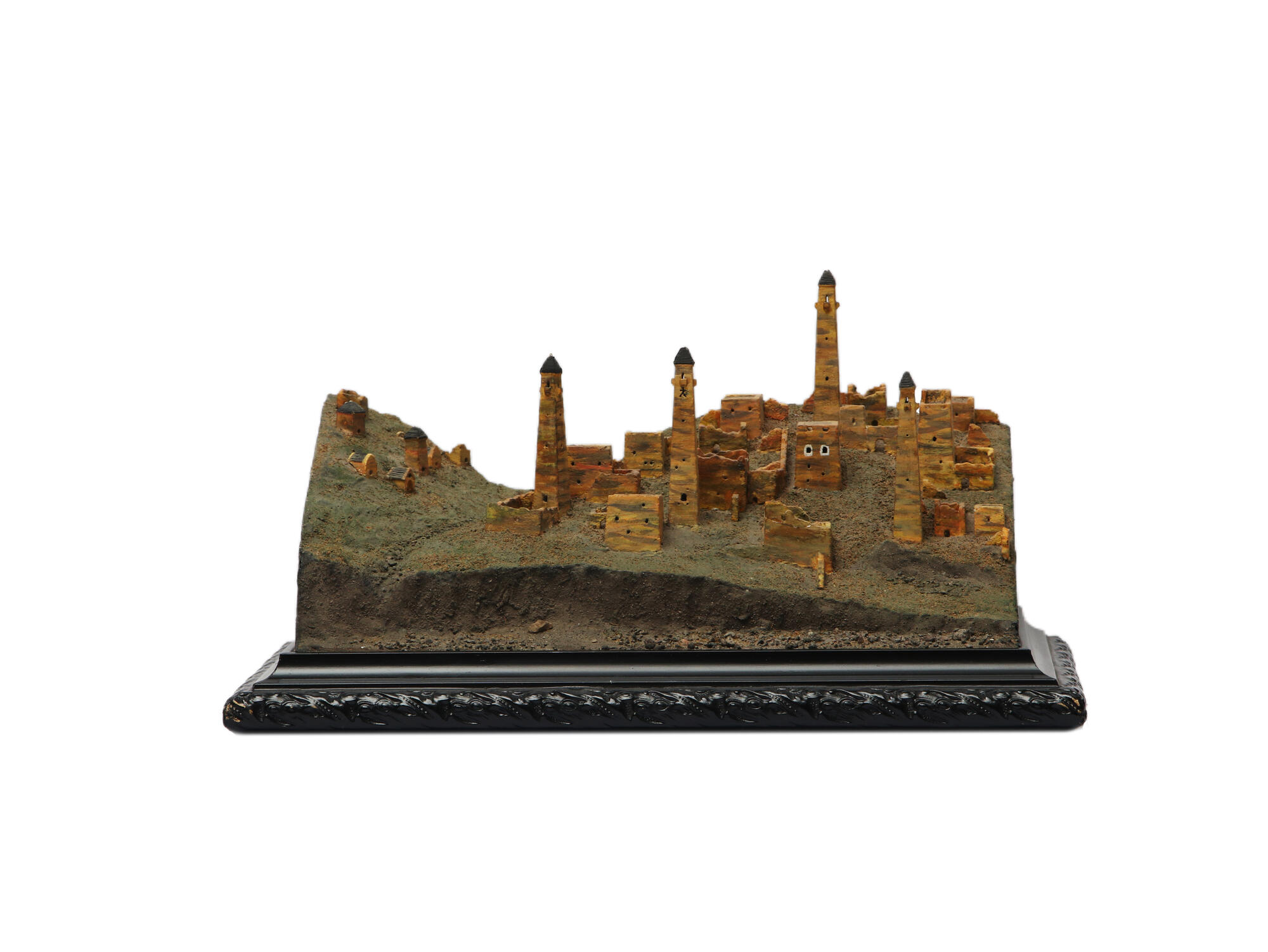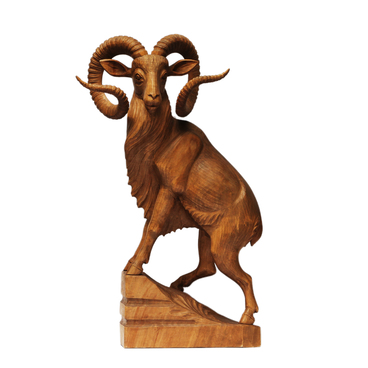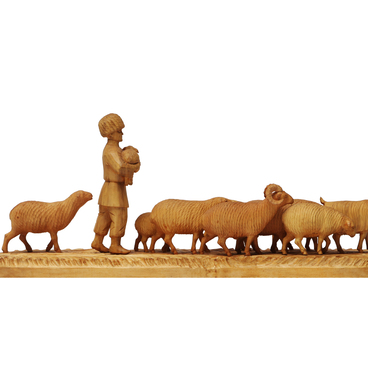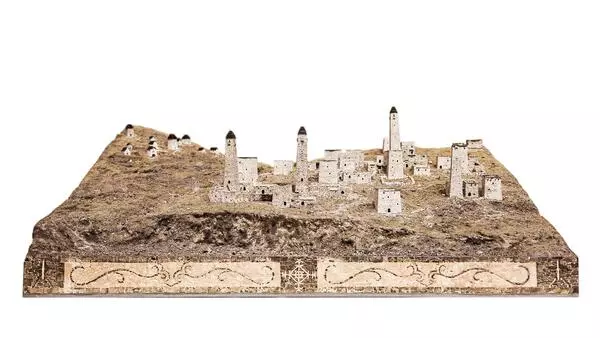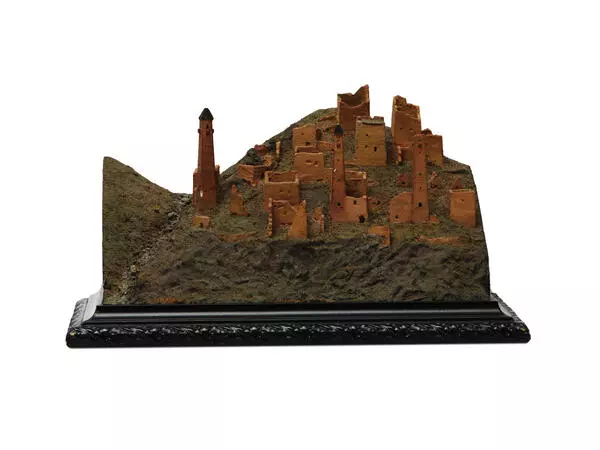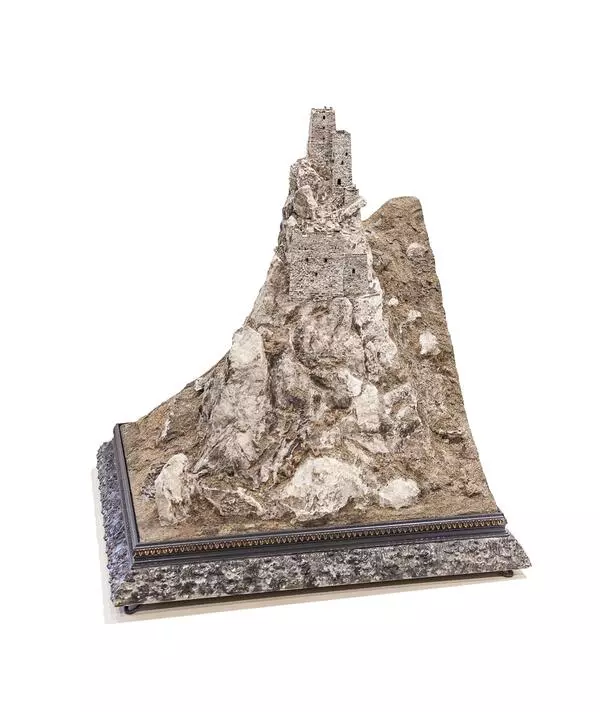Magomed-Bashir Ozdoev' s sculpture is a gypsum replica of the ancient Ingush tower complex ‘Targim’.
The settlement appeared approximately in the 15th-17th centuries in the Dzheyrakh region near the Assa River. The highlanders occupied lands along the river from north to south. The buildings were erected here very close to each other. There are four military towers, more than 20 residential buildings, as well as two types of necropolises (large elaborate cemeteries in ancient cities): ancient above-ground crypts and two small Muslim cemeteries.
The biggest part of Targim is occupied by residential towers. As a rule, such towers were two or three-stories high. A cattle barn and grain storage usually were on the ground floor. Families lived on the second story. The average area of this room with a three-meter ceiling ranged from 45 to 70 square meters. Impromptu bedrooms and a kitchen were located inside of it. The fireplace with a chain hanging over it was the most important room in the whole house. Here the family cooked food, discussed important issues, arranged feasts, and rested.
The third story was used to store food and different tools. This space was also used as a guest bedroom. Sometimes the family installed a small balcony, making it possible to enjoy the picturesque view.
Magomed-Bashir Ozdoev was born on October 19, 1979, in the village of Kantyshevo. He made his first replica of a tower using gypsum. This craft defined his future artistic career. Presently, he is renowned for his detailed sculptures made of natural stone and gypsum. He became a member of the Artists’ Union of the Republic of Ingushetia. His works are housed in the Ingush State Museum of Local History named after T. Malsagov, the State Museum of Fine Arts of the Republic of Ingushetia, and private collections in Russia and abroad.
Not all of the craftsman’s replicas copy real tower complexes. He creates many of his works by using his imagination, supplementing it with his knowledge of historical material and Ingush folklore.
The craftsman spent several months creating each masterpiece. It is widely known that he dedicated about two years to creating his most ambitious work ‘Halchi’.
The settlement appeared approximately in the 15th-17th centuries in the Dzheyrakh region near the Assa River. The highlanders occupied lands along the river from north to south. The buildings were erected here very close to each other. There are four military towers, more than 20 residential buildings, as well as two types of necropolises (large elaborate cemeteries in ancient cities): ancient above-ground crypts and two small Muslim cemeteries.
The biggest part of Targim is occupied by residential towers. As a rule, such towers were two or three-stories high. A cattle barn and grain storage usually were on the ground floor. Families lived on the second story. The average area of this room with a three-meter ceiling ranged from 45 to 70 square meters. Impromptu bedrooms and a kitchen were located inside of it. The fireplace with a chain hanging over it was the most important room in the whole house. Here the family cooked food, discussed important issues, arranged feasts, and rested.
The third story was used to store food and different tools. This space was also used as a guest bedroom. Sometimes the family installed a small balcony, making it possible to enjoy the picturesque view.
Magomed-Bashir Ozdoev was born on October 19, 1979, in the village of Kantyshevo. He made his first replica of a tower using gypsum. This craft defined his future artistic career. Presently, he is renowned for his detailed sculptures made of natural stone and gypsum. He became a member of the Artists’ Union of the Republic of Ingushetia. His works are housed in the Ingush State Museum of Local History named after T. Malsagov, the State Museum of Fine Arts of the Republic of Ingushetia, and private collections in Russia and abroad.
Not all of the craftsman’s replicas copy real tower complexes. He creates many of his works by using his imagination, supplementing it with his knowledge of historical material and Ingush folklore.
The craftsman spent several months creating each masterpiece. It is widely known that he dedicated about two years to creating his most ambitious work ‘Halchi’.
